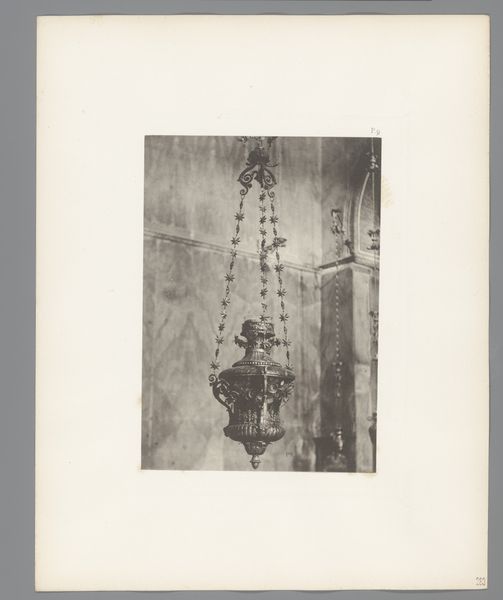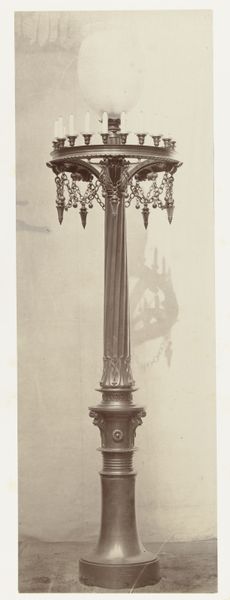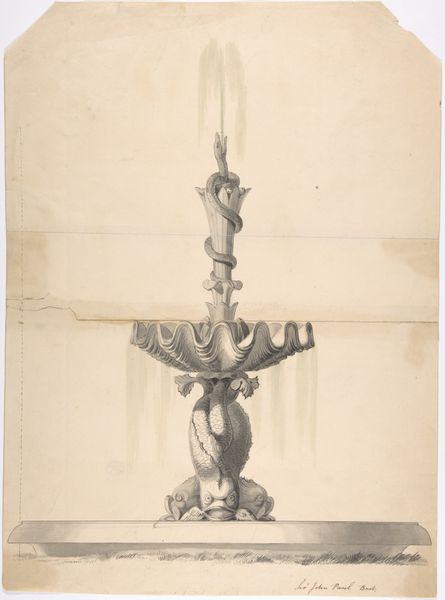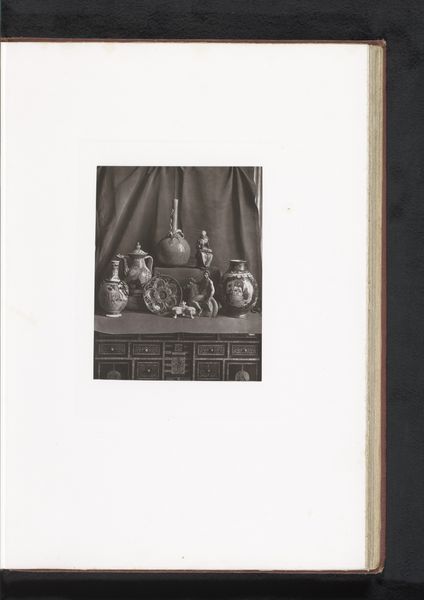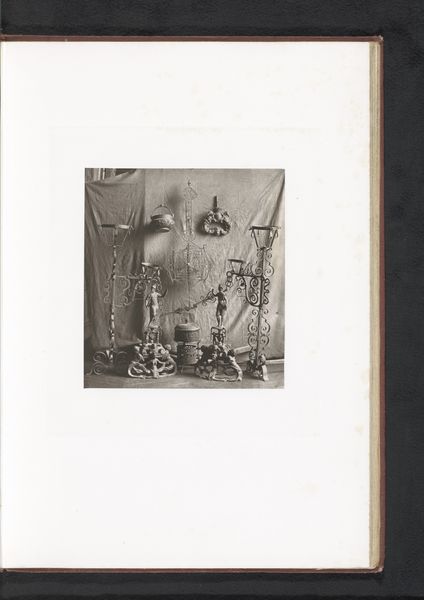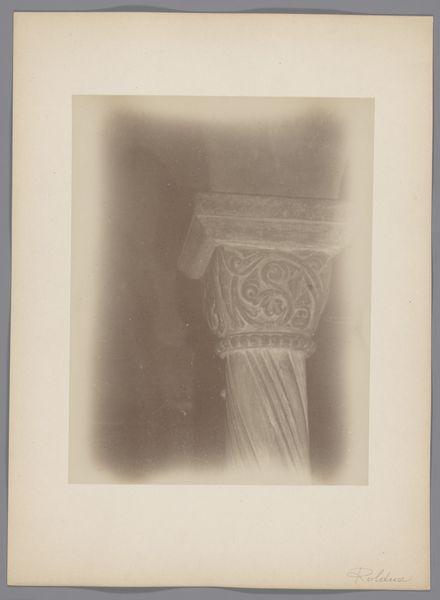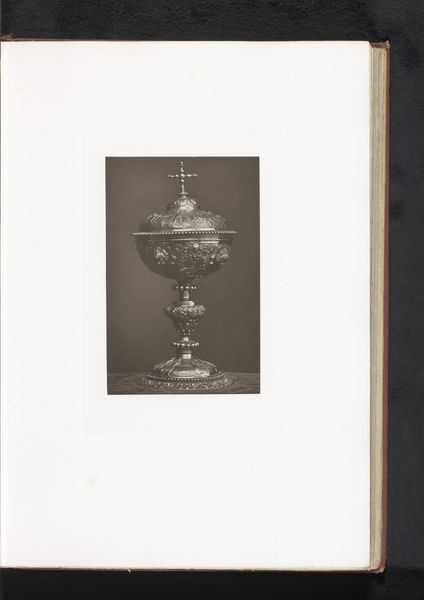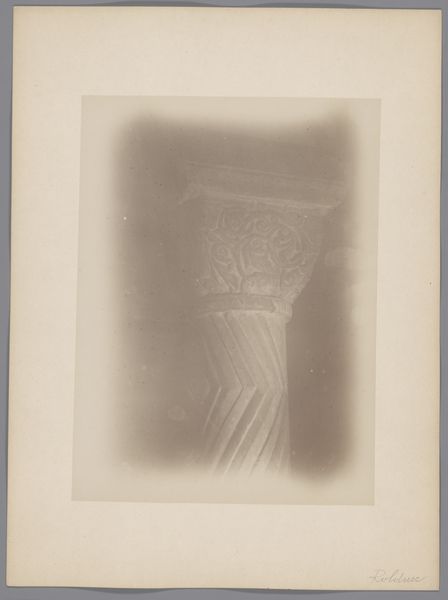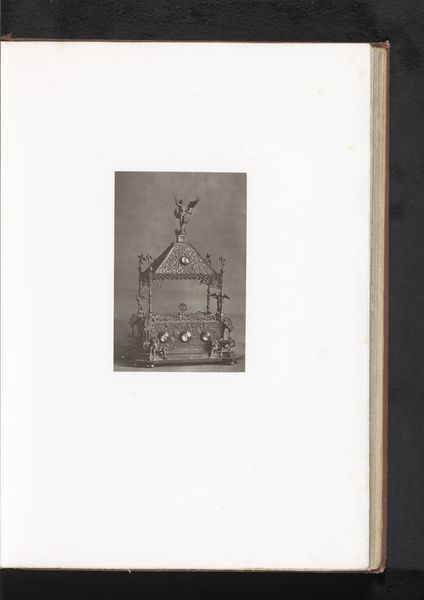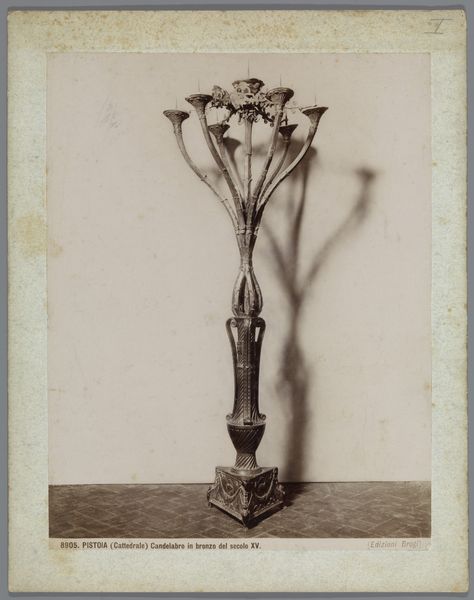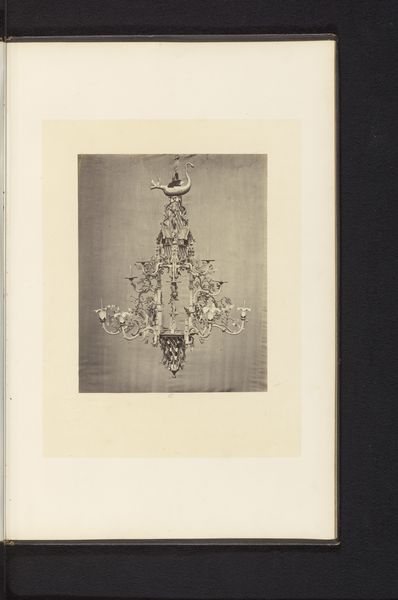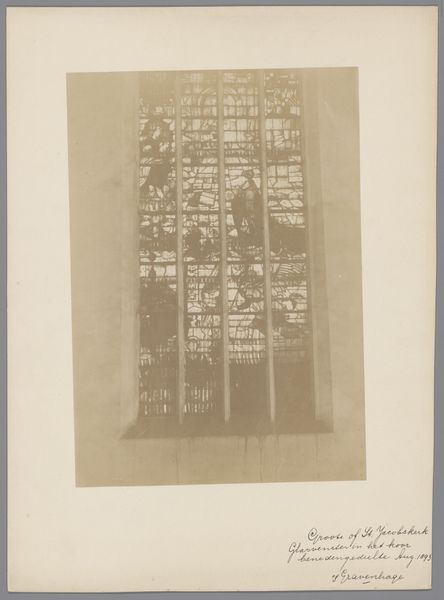
Dimensions: height 221 mm, width 161 mm
Copyright: Rijks Museum: Open Domain
Editor: This is a photograph titled "Koperen kroonluchter in de Grote Kerk te Gorinchem," taken in 1909 by an anonymous photographer. It features a copper chandelier within the Grote Kerk. I find the eagle on top to be particularly striking. What’s your initial interpretation of this piece? Curator: What interests me most about this image is how it silently speaks to power and authority. The eagle, traditionally a symbol of empire, is perched atop an object of adornment within a sacred space. How does this visual juxtaposition speak to the complex relationship between religious institutions and secular authority at the turn of the century? Do you think it implies the church was potentially subject to government oversight? Editor: That’s an interesting thought. I was mostly focused on the aesthetic, like how the texture of the drapery behind it contrasts the shiny metal of the chandelier. The eagle is almost hidden against that background. Curator: Precisely! It almost suggests a tension, doesn't it? The eagle, representing power, struggles to assert itself. In 1909, what does the obscured symbolism represent? Are we looking at a reflection of broader societal changes, where traditional power structures might be undergoing a shift? Consider the social and political context. Were ideas about democracy and secularism becoming more prominent? Editor: So you're saying this photograph could be subtly commenting on the church's changing role in society at the time? I never thought about it that way, but it makes sense. Curator: It opens the possibility, right? That’s the power of contextual analysis. Consider the image as a cultural document reflecting the negotiations of power. This piece prompts a further exploration of cultural and political meanings embedded within seemingly straightforward representations of objects and places. What do you think we can ask of viewers, considering such historical framework? Editor: Well, I will certainly be examining other images with that new point of view. I've learned to look beyond the immediate aesthetic and consider the sociopolitical context. Curator: Exactly. And the act of viewing becomes an act of inquiry, connecting the past with the ever-evolving present.
Comments
No comments
Be the first to comment and join the conversation on the ultimate creative platform.
